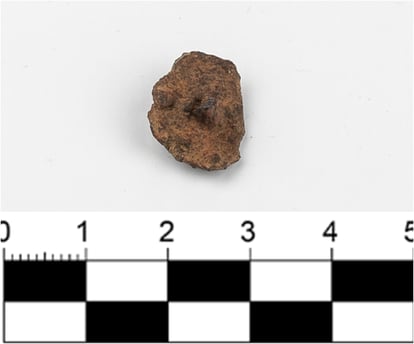Julius Caesar stepped on the soil of Hispania twice.
The first in 69 BC, as
quaestor
, a kind of great administrator of Hispania Ulterior, and the second shortly after, in 61 BC.
C. and already like
propretor
, the magistrate that directed the province under the control of the consul of Rome.
But César did not pay the bills in his meteoric political career and then chose to seek war to fill his empty coffers.
The warlike Lusitanians, who occupied the west of the Peninsula, would become their objective and, together with them, the Vetons, another people of Celtic culture that extended approximately through the current provinces of Ávila, Segovia, Cáceres and Toledo.
So his
oppida
―Fortified cities― should be completely subdued before facing the Lusitanians.
There could be no enemies in the rear.
One of these settlements was found by archaeologist Iván Aguilera in 2016 in El Espinar (Segovia).
He named the Canto-Los Hierros deposit, because it was the name of the rocky outcrop on which the town stood.
Now, this researcher, with the support of the Colectivo Azálvaro cultural association, has made public the identification of at least two of the camps that could be related to those that the Roman military genius raised, about 70 kilometers from Madrid, to open road to Lusitania and kill the vetones.
The 40 camps of Augustus in the north of Hispania
The study "
Citadel finícola: the settlement of Canto-Los Hierros (El Espinar-Segovia
)", signed by Aguilera, details that this besieged town was built next to a strategic communication route that would later serve to divide the Roman provinces of Hispania Ulterior and Citerior.
According to the report, “the citadel of Canto-Los Hierros was surely built during the Iron Age, under a natural route between the main fords of the Duero and the Tagus and by an elite of intermediaries in the commercial flow, such as they were the vetones ”.
In addition, the Segovian fortified city had visual contact with another pre-Roman town, that of Ulaca (Villaviciosa, Ávila), one of the most important known and excavated Veton sites, which had a wall of three kilometers.
Roman soldier sandal tack found in El Espinar. Ivan Aguilera
The protohistoric settlement of Canto-Los Hierros, says Aguilera, "is exceptional in itself", because it is situated in the middle of the Central System, more than 1,700 meters above sea level, and because it covers a minimum area of 135 hectares, which It includes the Roman camps around it that besieged it.
"This represents a new opportunity to review the expansion of classical civilization from Lazio to Hispania", he maintains.
For Aguilera, promoter of the archaeological program, it is "a colossal site without parallel in the Peninsula."
But the expert complains of a lack of public aid and difficulties in accessing the fields of the deposit, since they are privately owned.
Laser image of one of the Roman camps of El Espinar.
In red, his front door. Ivan Aguilera
At the moment, four lines of wall have been detected in the Vetonian citadel, which cover an area that would fully fit the current urban area of El Espinar, a municipality of about 9,000 inhabitants.
Associated with this Celtic settlement, the specialist maintains, "the existence of two Roman camps has been corroborated, in which materials dated to the middle of the 1st century before our Era and structures framed in the military models of late-republican Rome have been found." .
For all this, and "because they are the only
castra
[Roman fortified camps] documented so far in the midday of the Duero Valley", the field fortifications located, Aguilera maintains, have great archaeological significance.
These would be a clear antecedent of the well-known Asturcántabra wars that occurred a few decades later, those undertaken between 29 BC and 19 BC by the Emperor Augustus and also associated with a network of camps - up to 40 - to occupy the entire north of the peninsula.
When Rome defeated a town in Hispania, it used to dismantle its fortified settlements to avoid reoccupation.
He created others in the valleys that followed Latin architecture and urbanism.
In the case of the old city of El Espinar, he had to lower the population from 1,700 meters to the green valleys of Segovia.

